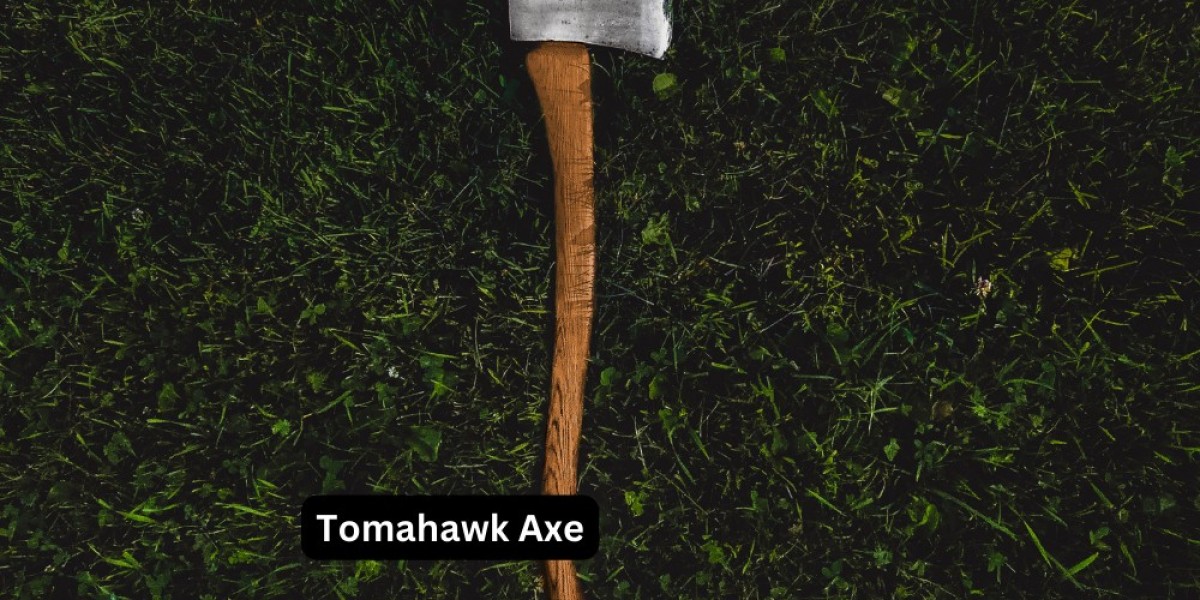The tomahawk axe, a symbol of craftsmanship, utility, and history, has captivated the minds of many throughout centuries. This versatile tool, originally crafted by Indigenous peoples of North America, has evolved in form and function, yet retains its iconic status. Whether used as a weapon, a tool, or a ceremonial object, the tomahawk embodies a rich heritage and remains relevant in modern times. This guide delves into the history, design, uses, and cultural significance of the tomahawk axe, as well as its continued relevance today. The History of the Tomahawk Axe The origins of the tomahawk axe can be traced back to Indigenous peoples of North America. The word "tomahawk" itself is derived from the Algonquian word "tamahak," which means "to cut." Early tomahawks were crafted from stone, bone, or wood, and were designed to serve multiple purposes, including hunting, chopping, and self-defense. When European settlers arrived in the Americas, they introduced metalworking techniques. This led to the incorporation of steel and iron into tomahawk designs, significantly enhancing their durability and functionality. Over time, the tomahawk became a favored tool for both Native Americans and settlers, finding its way into trade and military use. Anatomy of a Tomahawk Axe A tomahawk axe is a simple yet effective design, consisting of three main components: 1. HeadThe head is typically made of metal in modern tomahawks. It features a sharp blade on one side for cutting and chopping, and often a secondary feature on the opposite side, such as a spike, hammer, or blunt surface for pounding. 2. Handle Traditionally, tomahawk handles were made from hickory, ash, or other sturdy woods. Modern designs often incorporate materials like fiberglass or composite for added durability and grip. 3. Weight and Balance One of the defining characteristics of a tomahawk is its lightweight design and balanced construction, making it easy to wield and effective for throwing. Uses of the Tomahawk Axe1. Hunting and Survival The tomahawk’s sharp edge makes it an essential tool for cutting wood, preparing game, and other survival tasks. Its lightweight design ensures it’s portable for outdoor activities. 2. Combat In historical contexts, the tomahawk was used as a weapon in hand-to-hand combat and for throwing. Its versatility made it a valuable tool for warriors. 3. Ceremonial Use For many Indigenous tribes, the tomahawk held ceremonial and symbolic importance. Peace pipes were sometimes integrated into tomahawk designs, signifying treaties or agreements. 4. Recreational Throwing In modern times, tomahawk throwing has gained popularity as a recreational activity. Competitions and events celebrate the skill and precision required to master this art. Types of Tomahawk Axes Tomahawk axes come in various styles, each tailored to specific uses: 1. Tactical Tomahawk Designed for modern military and survival scenarios, tactical tomahawks feature durable materials and multipurpose designs, including pry bars, hammerheads, and spikes. 2. Throwing Tomahawk Lightweight and balanced, throwing tomahawks are specifically designed for recreational and competitive throwing. 3. Breaching Tomahawk Used by law enforcement and rescue teams, breaching tomahawks are built for breaking through barriers, doors, and windows. Caring for Your Tomahawk AxeProper care and maintenance are essential to ensure the longevity and performance of your tomahawk axe. Here are some tips:
Cultural Significance of the Tomahawk The tomahawk is more than a tool; it’s a symbol of heritage and identity. For many Indigenous communities, the tomahawk represents a connection to ancestors and traditions. It has also become a cultural icon in broader American history, symbolizing both conflict and unity. Today, the tomahawk is appreciated worldwide for its design, utility, and historical importance. Modern Applications of the Tomahawk While its roots are deeply historical, the tomahawk has found modern applications in areas such as:
Conclusion The tomahawk axe is a testament to human ingenuity and adaptability. Its evolution from a basic tool of survival to a modern multipurpose instrument highlights its enduring appeal. Whether admired for its historical significance, utilized for practical purposes, or enjoyed in recreational activities, the tomahawk remains a timeless icon. By understanding its history, design, and uses, we can better appreciate the legacy and versatility of this remarkable tool. |
SERVICES55
22 Blog posts


